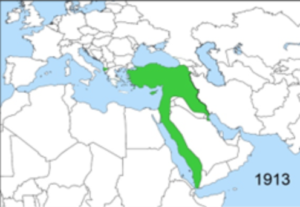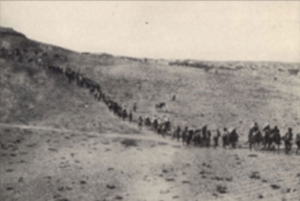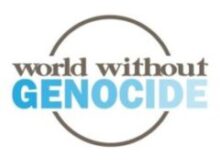The Ottoman Christian Genocide
What
The Ottoman Empire, led by the radical nationalist ‘Young Turks,’ carried out a genocide between 1915-1923. While Armenians were the most affluent and widely persecuted group, perpetrators sought to purge the Ottoman Empire of all Christian minorities. This included Assyrians and Greeks. Scholars estimate that 1.5 million Armenians were slaughtered, but the total death toll is over 2 million people.
 The term ‘Assyrian’ encompasses the Chaldeans, Nestorians, Syriacs, Arameans, and more. Before 1915, between 500,000 and 600,000 Assyrians lived in the Ottoman Empire. They were persecuted due to anti-Christian hatred and to their history of seeking independence from the Empire.
The term ‘Assyrian’ encompasses the Chaldeans, Nestorians, Syriacs, Arameans, and more. Before 1915, between 500,000 and 600,000 Assyrians lived in the Ottoman Empire. They were persecuted due to anti-Christian hatred and to their history of seeking independence from the Empire.
In 1821, the Greek War of Independence established a Greek state that was separate from the Ottoman Empire. This war, after decades of Greek revolts, turned many Ottoman Turks against the Greek people. At the dawn of the 20th century, nearly 2 million Orthodox Greeks remained in the Ottoman Empire. Religious and ethnic tensions escalated during Greco-Turkish conflicts in the Balkan Wars (1912-1913), leading many Turks to see Ottoman Greeks as accomplices to the runaway Greek state.
Where
In the 1500s, the vast Ottoman Empire spanned Asia Minor, much of the Middle East, southeastern Europe, and North Africa. However, by the 20th century, the Empire was experiencing a steady loss of territory to other regional powers. Christian minorities were publicly blamed for the Empire’s decline and were persecuted as a result.
Before 1915, Christians, including the Armenians, Assyrians, and Pontic and Anatolian Greeks, were dispersed throughout the Ottoman Empire. During the genocide, the majority of their populations were displaced, either by forced deportations to the Mesopotamian desert or by mass exodus to escape persecution.
How
The genocide of the Assyrians was similar to that of the Armenians. Hundreds of thousands of Assyrians were deported to the desert in death marches, during which many died from starvation or disease. Women were raped and enslaved. Many villages or deportation convoys were massacred.

(A caravan of 5,000 Christian refugees from Kharput (now Elazig) to Trebizond (now Trabzon), https://creativecommons.org/licenses/by-sa/2.0/deed.en)
In the Greek case, Greco-Turkish military conflicts were used as a pretext for mass-deportations. During the Greco-Turkish War (1919-1922), Turkish forces committed mass rapes and civilian massacres when they overtook Greek villages or cities.
Between 250,000 and 500,000 Assyrians and around 350,000 Greeks were killed during the Ottoman Christian Genocide. Hundreds of thousands more were displaced.
Response
After the genocide, the international community was largely distracted in the wake of World War I. It was not until the late 20th century that the Armenian genocide began to gain global recognition. The worldwide Armenian diaspora, a relatively cohesive group of about 11 million people, has successfully pursued advocacy to gain recognition.
In contrast, the Greeks and Assyrians have less organized international diasporas. As a result, only 9 of the 32 countries that recognize the Armenian Genocide have also recognized the persecution of other Christian minorities.
Ample documentation proves that all Christians in the Ottoman Empire were submitted to a systematic campaign of extermination. Still, Assyrians and Greeks struggle against false narratives, a lack of political interest, and international silence.
Updated 2021.
References
“Adoption of declaration to certify that Armenia recognizes Greek and Assyrian genocide: Eduard Sharmazanov.” https://armenpress.am/eng/news/798768/adoption-of-declaration-to-certify-that-armenia-recognizes-greek-and-assyrian-genocide-eduard-sharmazanov.html
“Assyria.” https://www.britannica.com/place/Assyria
“Countries that Recognize the Armenian Genocide.” https://www.armenian-genocide.org/recognition_countries.html
Fusiek, David. “The case of the Greek Genocide: a historiographic overview of the modern academic debate.” Utrecht University, 2020.
Gaunt, David. “The Complexity of the Assyrian Genocide.” Genocide Studies International, 2015.
Hinton, A.L., La Pointe, T., & Irvin-Erickson, D. Hidden Genocides: Power, Knowledge, Memory. Rutgers University Press, 2014.
“IAGS Resolution: Assyrian and Greek-Genocide.” https://genocidescholars.org/wp-content/uploads/2019/04/IAGS-Resolution-Assyrian-and-Greek-Genocide.pdf
Koinova, Maria. “Diaspora coalition-building for genocide recognition: Armenians, Assyrians and Kurds.” Ethnic and Racial Studies, 2019.
“Not an Armenian Genocide, but a Genocide of Christians” https://www.haaretz.com/israel-news/not-an-armenian-genocide-but-a-genocide-of-christians-1.9769016
“Six Reasons Why the Ottoman Empire Fell.” https://www.history.com/news/ottoman-empire-fall
“Sweden Parliament Resolution.” https://www.armenian-genocide.org/Affirmation.414/current_category.7/affirmation_detail.html
Travis, Hannibal. ““Native Christians Massacred”: The Ottoman Genocide of the Assyrians during World War I”. Genocide Studies and Prevention, 2006.
“When Turkey Destroyed Its Christians.” https://www.wsj.com/articles/when-turkey-destroyed-its-christians-11558109896
“8 things you didn’t know about Assyrian Christians.” https://www.pbs.org/newshour/world/8-things-didnt-know-assyrian-christians#:~:text=Most%20of%20the%20world’s%202,%2C%20most%20recently%2C%20by%20ISIS


